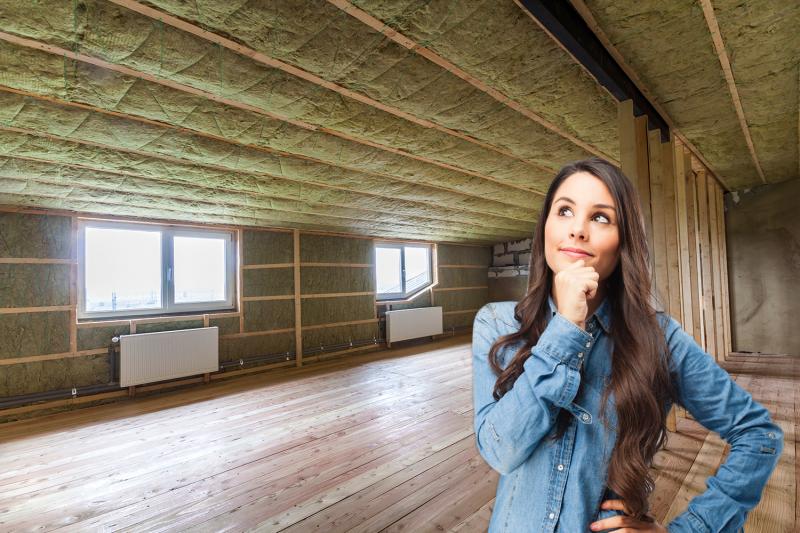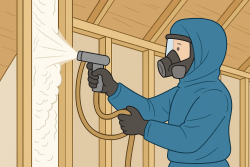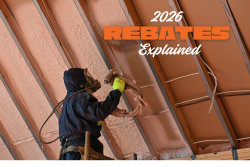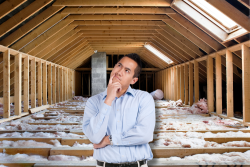Ensuring your home is adequately insulated is not just a matter of comfort; it's also about efficiency and cost savings. If you suspect your home might be under-insulated, conducting a simple insulation inspection can reveal much about your current situation and what may be needed to optimize your home's insulation. Among the various insulation options, loose-fill insulation stands out for its effectiveness and ease of installation.
Inspecting Your Home's Insulation
Begin your insulation check in the attic, as it's often the home's primary source of heat loss. Assess the type and depth of existing insulation—spray foam, cellulose, fibreglass, or another material. The insulation depth is crucial as it relates to the R-VALUE, a measure of thermal resistance. For instance, loose-fill cellulose offers an R-VALUE of 3.1 – 3.8 per inch, while loose-fill fibreglass ranges from 2.2 – 2.9.
Understanding R-VALUES
Different materials offer varying levels of insulation:
- Loose-fill Cellulose: 3.1 – 3.8 R-VALUE per inch
- Loose-fill Fiberglass: 2.2 – 2.9 R-VALUE per inch
- Loose-fill Stone Wool: 2.2 – 3.3 R-VALUE per inch
- Fibreglass Batting: 2.9 – 3.8 R-VALUE per inch
- Stone Wool Batting: 3.3 – 4.2 R-VALUE per inch
- Polyurethane Foam: 5.6 – 8.0 R-VALUE per inch
- Cementitious Foam: 2.0 – 3.9 R-VALUE per inch
Attics should have between 14 and 16 inches of cellulose insulation for optimal efficiency. However, many homes fall short, averaging closer to 5 inches. Cellulose, predominantly made from recycled newspaper in Canada, contains approximately 80% recycled content and is treated with boric acid as a vermin retardant.
Ontario Building Code For Insulation in 2024
The Ontario Building Code sets standards to ensure safe and comfortable homes. It requires specific insulation levels for different parts of a house. Here are some key points:
- Installation of Thermal Insulation must be at least 2 inches above a crawl space floor and in contact with an air barrier.
- Loose-fill insulation must be covered with a transparent membrane, remain stable post-installation, and should not obstruct internal finishes.
Ceiling and Wall Insulation
Beyond the attic, inspect your ceiling and walls. Ceiling insulation is an effective way to prevent heat loss and reduce noise, enhancing the overall energy performance of your house. Wall insulation, including basement walls, significantly improves thermal performance, reducing energy consumption and energy bills.
Does Your Attic Insulation Measure Up?
If your insulation needs improvement, consider Blown In Insulation in Waterloo. This type of insulation efficiently fills gaps and covers uneven surfaces, providing a comprehensive thermal barrier. Loose fill insulation is also an excellent choice because of its ability to conform to any space, ensuring no area is left under-insulated.
Professional Insulation Services
If you need more clarification about your home's insulation status, it's wise to consult a professional. Companies like Reitzel Insulation offer free in-home assessments to determine your insulation needs for the attic, roof, or any other part of your home. They can provide an accurate estimate and handle the installation process efficiently.
Ask About Rebates
Remember to inquire about available rebates for insulation upgrades, which can make your home improvement project more affordable.
Conclusion
Proper insulation is critical to a comfortable, energy-efficient home. Blown-In Insulation in Waterloo is an excellent choice for enhancing your home's insulation, ensuring you stay warm in winter and cool in summer while keeping energy costs down. Contact Reitzel Insulation at 1-800-265-8869 or fill out our online contact form for a free quote and to learn more about how we can meet your insulation needs.
GET A FREE QUOTE today and take the first step towards a more comfortable and efficient home!

















